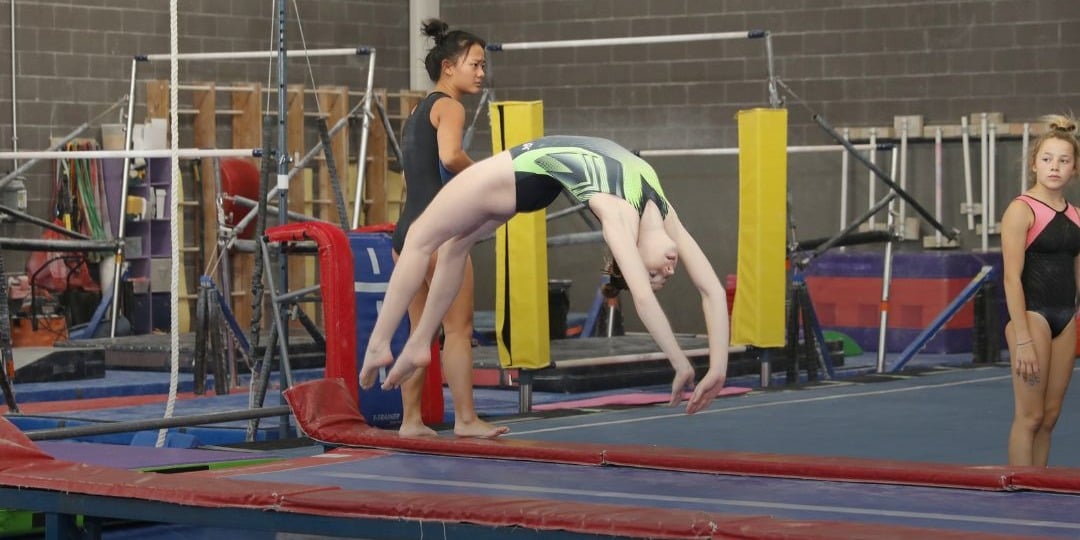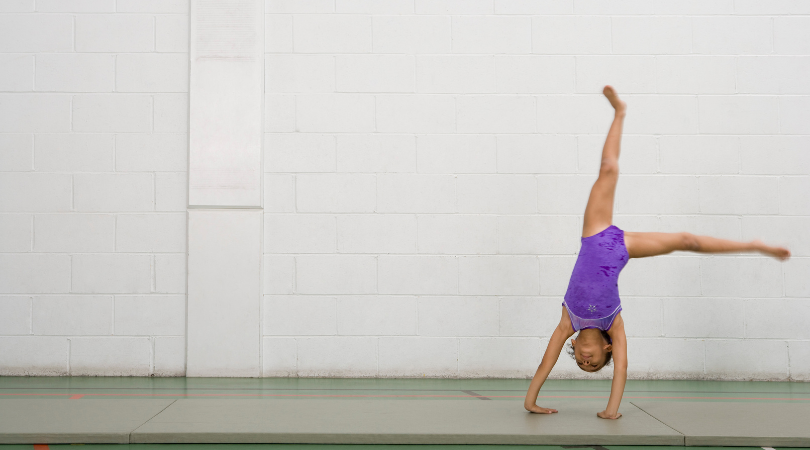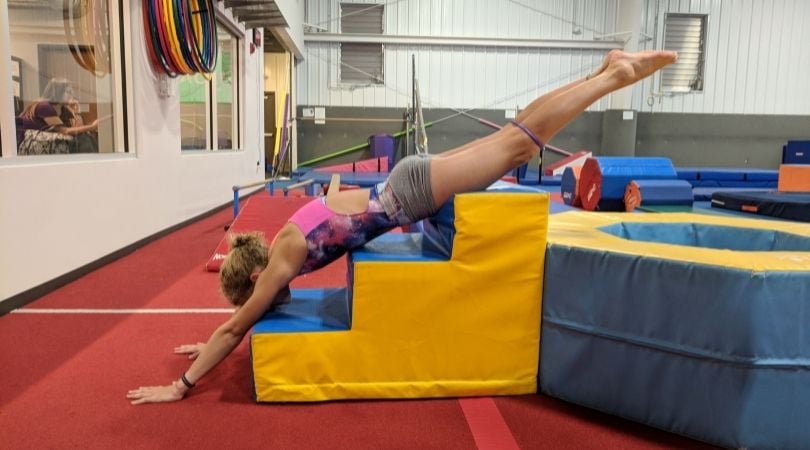Top 10 Drills To Improve a Back Handspring At Home
My First attempt at a Back Handspring was my Junior year in high school...after a Cross Country practice that was 6 miles long, in mid-August (90° and humid), with two high school cheerleaders spotting me that did not know how to do it themselves. I was fortunate that I only weighed about 125lbs in high school and I lived in a farming community so my spotters were strong. After getting told to “Jump backwards to your hands” over their outstretched arms...I flung myself backwards. Much to their surprise….I didn’t die. “You don’t need 2 spotters, try it with one.” So I did…. “We’ve been working on this all summer and you come along and do it in 2 tries! WE HATE YOU! GO AWAY!” Sadly, no cheering for Coach Heath.
1. Do No Attempt This Skill….without proper supervision and a safe surface
2. While we live in the age of YouTube, Instagram, and probably a billion other social media outlets that I don’t have time to pursue. They cannot spot you so don’t try it. Most of what you can find online (when it comes to tumbling) are fails/a good way to hurt yourself. Most people need to be spotted to learn this skill (learn how to teach a back handspring), a very tiny percentage of the population can fling themselves backwards and not get hurt outside of using a trampoline.
3. It takes time. A lot of time learning a back handspring. I may have been able to jump backwards and resemble a BHS, I certainly did not look polished, did not look like I could progress, and certainly looked like I was going to hurt myself to the casual observer. It took me hundreds if not thousands of tries after that (and watching gymnastics on TV whenever I could) before I developed a modicum of technique. I practiced mostly on the lush grass of a golf course or on the wrestling mats. By the end of my senior year I could do roundoff 3 back handsprings on the hardwood stage for our Senior Night Show.
So what can you do at home that will help with your back handspring? Here is a list of things that you can do at home or when you are not getting supervision from a qualified tumbling coach. Then, head to some tumbling classes!
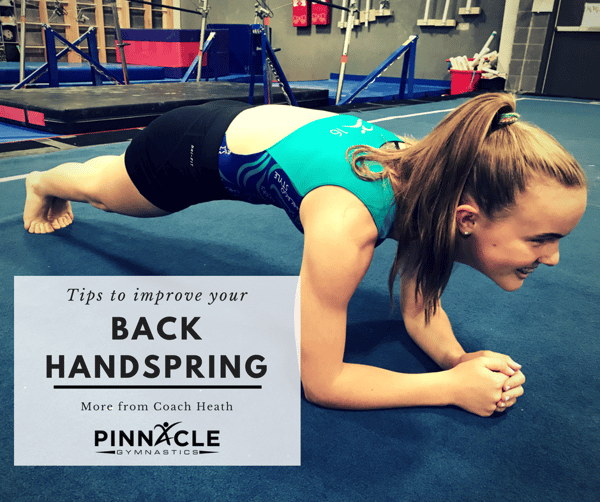
1. Stretch
Specifically your wrists, ankles, and shoulders. Pulling gently back on your fingers towards the top of your forearm on each hand as well as pulling towards the front of your forearm. Rolling your hands around in a circle. Rolling the ankles around as well as pulling your foot in every direction with towel around the ball of your foot. Arm circles and shoulder articulations (rolling your hands from palm up to palm down/out) are awesome.
2. Work on your vertical jump
If you can jump really well, you will be able to transform it into a better BHS. No boxes needed but there are tons of jump drills to do. That is a whole blog topic by itself.
3. Planking
Holding your torso extremely tight and rigid in a straight line. There are a lot of modifications; elbows, tall, wide hands, close feet, inclined, declined, and don’t forget the ones on your side!
4. Push ups
Normal run of the mill type ones to begin with. Then you can work on a variety of modifications, like diamond, wide stance, cross legged, inclined, declined, etc
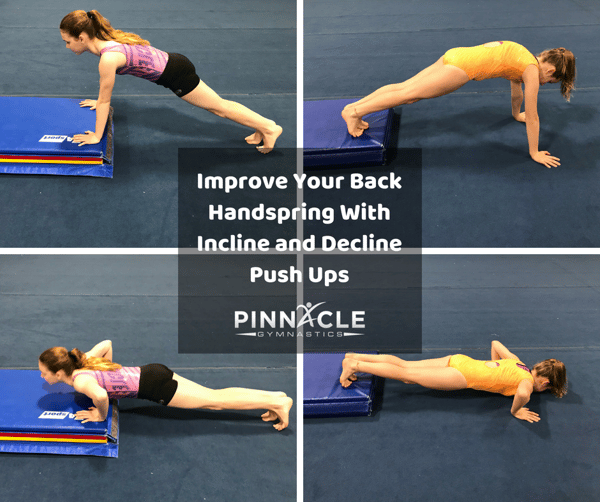
5. Lunge
Working on holding a lunge, stepping forward into it, pushing out of it with each leg, holding and lowering your body down and up, switching fast or slow, various degrees of angles, hands if front, hands overhead, holding on to small weights in each hand, traveling forward, backward, sideways, etc
6. Cartwheels
However tall you are with arms extended up is my measuring stick for a good cartwheel length. Mark on the ground where your heel is while laying down, then again where your fingers touch, that is how far from front foot to opposite front foot you should travel while doing a cartwheel (basically). Learn more about tumbling terminology.
7. Cat & cow exercises
similar to the yoga poses. While propped up on your hands and bent knees, shins flat, begin to press your spine up towards the ceiling into a rounded halloween cat like pose, then ‘deflate’ your spine down and try to get is to sage like cow.
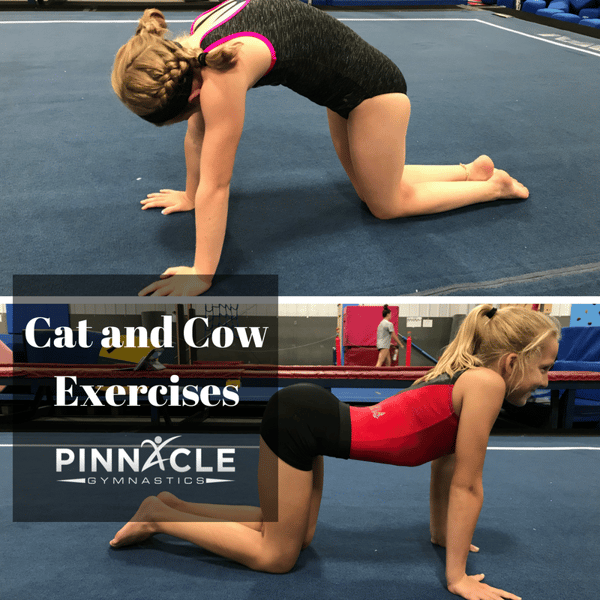
8. Handstands
Very Important to keep control, start low. I don’t need you to get all the way upside down and fall over onto the coffee table. Instead, I would rather you think of a Teeter Totter, your back foot will only go as high as your hands are up front. Clicking your front foot to your back foot before coming back down to the ground.
9. Shoulder Mobility
Being able to reach your hands and elbows behind your head without arching the spine. #1 problem with most back handsprings is arching the spine back far too much trying to get the arms overhead. Place your right hand over your head and bend your elbow so your hand is on your back, now with your left hand gently pull your elbow down and towards the body a bit. Classic Tricep stretch. Now bend your left side to create even more stretch in the Latissimus (Lats) Dorsi. Don’t forget the other side.
10. Torso Control
This goes along with the Shoulder mobility. Contrary to popular belief, you do not need a flexible spine/back to do back handsprings….you do need the ability to flex and contract the torso with precision. Start with your back against a wall with your feet 6-8” away from the wall. Lean against the wall and put your arms overhead straight. Is your back still touching? Your Lower back? If not, squeeze the abdominals to push your spine against the wall. If your arms are still against the wall, AWESOME! Now lower your elbows a little past 90 degrees to your sides...how’s your spine doing?
Just a few quick things you can do at home that will create a better back handspring. I could go on but that is the basics. See you in the gym!
Coach Heath

